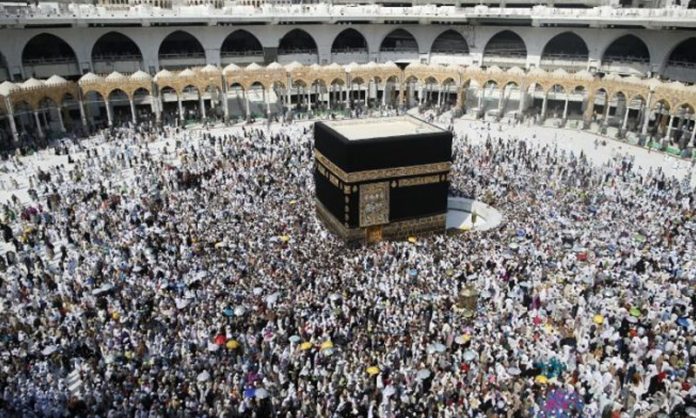BEIJING: More than 12,800 Chinese Muslims selected under a quota split up among 30 provincial-level Islamic administrations, have been airlifted to Saudi Arabia where they would join about two million pilgrims from around the world for Hajj this year.
Among the regions, the Xinjiang Uyghur Autonomous Region takes about one-fourth of the total, followed by the Ningxia Hui Autonomous Region, which is allocated 2,700 places this year.
The China Islamic Association, a national Muslim organization under the supervision of the State Administration of Religious Affairs (SARA), organizes Chinese pilgrims’ visits, according to official sources here on Wednesday.
The delegation of Chinese pilgrims land in Medina, the second holiest city in Saudi Arabia, stay there for four or five days before traveling on to Makkah for the formal processions of the pilgrimage.
Going on a pilgrimage to Makkah is one of the five tasks all Muslims are meant to undertake – and apparently the most difficult one to complete. It is customary for all worshipers to attempt to make the pilgrimage at least once in their life as long as they are able to do so, physically and financially.
As overseas travel becomes increasingly convenient and affordable for ordinary Chinese, demand is growing among the Muslim community, especially in the western regions of the country.
China has official policies to manage the Hajj and all potential Chinese pilgrims to Makkah have to first go through an application process.
First, one must go to the management committee of a local mosque to acquire proof of one’s Muslim identity, which should then be submitted to the local Islamic Association. Once approved by the association, the potential pilgrims have to have their health checked to ensure they are up to taking the long journey. Next, the wannabe hajji must pay travel fees to the association and then receive training.
According to Hajj application websites, each pilgrim must pay a bit more than RMB 40,000 ($5,998) in advance to cover the entire trip including their transport, meals, religious garments and insurance.
Anything that’s left over, which usually amounts to a few hundred RMB, is given back to the Hajji after their return to China and the balance sheet for each year is publicized on each provincial Islamic Association’s website.
The training they receive includes China’s Hajj policies and regulations, discipline related to taking a trip abroad, and religious knowledge about the Hajj.
“The aim of the training is to allow the pilgrims to understand how their journey is being organized and to enhance their sense of unity to ensure they have a safe and fruitful Hajj,” according to the Hajj department of the China Islamic Association.
Although there is no age requirement for pilgrims in Islamic teachings, the association requires that pilgrims should be over 18 years old, though some western provinces set the bar at 25 or 35.
In some provinces and regions, those over 70 years old are required to sign a declaration saying that they take responsibility for any health issues they experience while on Hajj.
The application process is very competitive, especially in western regions with large Muslim populations, even though the number of Chinese pilgrims has been dramatically expanding over the decades.
China has just over 20 million Muslims, according to the 2013 population census. A total of 10 ethnic groups including the Hui (with a population of 9.81 million) and the Uyghur (8.39 million) are majority Muslim.
The allocation of pilgrim quotas to provinces and regions is decided by the SARA according to the number of applications in each province, the hajj department of the China Islamic Association said. China’s national quota is set by Saudi Arabia.
The department said the total number of pilgrims China sends each year has hovered between 12,000 and 14,500 in recent years.
In 1980, the Muslim association began to accept ordinary Muslims’ applications to go on the hajj. In 1986, more than 2,000 Chinese Muslims went to Makkah.
China and Saudi Arabia established diplomatic ties in 1990, which further facilitated the growth in Chinese Hajjis.





